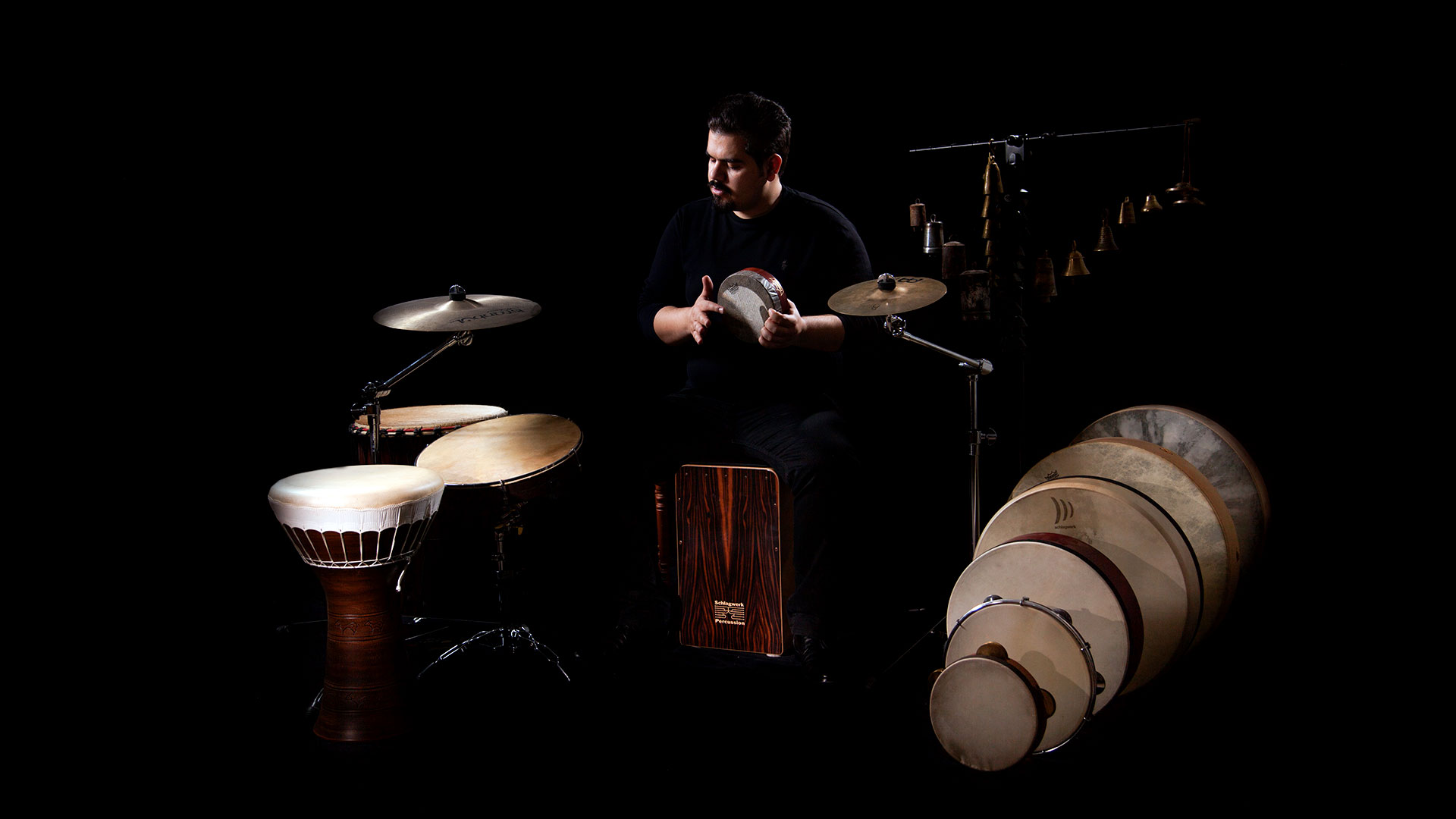
The genealogy of percussion instruments
Introduction
In the genealogy of percussion instruments, percussions or percussion instruments are a family of musical instruments and tools that are played by striking with the hand or a stick, rubbing, scratching, shaking and …, and have a very important role in producing rhythm. This branch of musical instruments, which is one of the most primitive and ancient artistic achievements of mankind, is also called percussion instruments. Percussion instruments, because of the simple structure that they usually have, have been made and played very early in ancient civilizations.
The English word percussion comes from the root “percuss” meaning to strike and is generally used for instruments that are played by direct contact of the hand. Meanwhile, the word drum means a drum that usually refers to percussion instruments that are played with a stick.
There are different criteria for classifying percussion instruments. For example, classification based on the sound-producing agent is one of Based on this, we can divide percussion instruments into two categories: skin-sound and self-sound. In another case, percussion instruments are divided into two categories: instruments with definite pitch and instruments without definite pitch. Percussion instruments with definite pitch have the ability to perform melody and have an important position in Western classical music. As: Vibraphone, xylophone, marimba, glockenspiel, timpani and … . Other types of classification of percussion instruments are also common, which include classification based on the structure of the instrument and classification based on playing with the hand (hand percussion) or stick (drums).
The theoretical framework of the present article
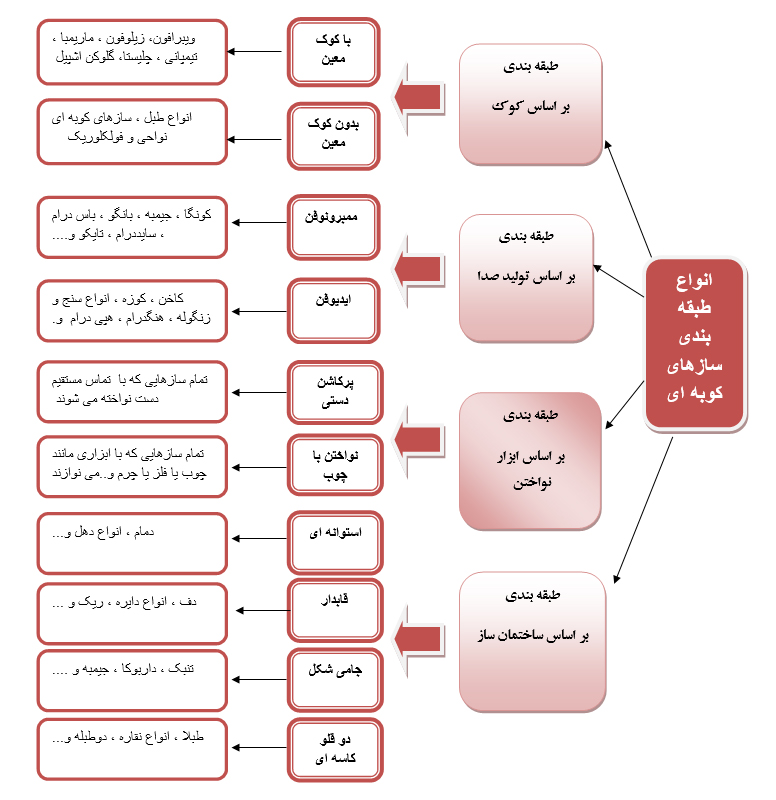
Skin-sound instruments or membranophones:
This group of instruments was named membranophones by Victor-Charles Mahillon, a Belgian musical scholar, in the genealogy of percussion instruments The word “membrane” means skin or membrane and refers to instruments that produce sound through the vibration of the skin. Membranophones have separate classifications in terms of their external structure, which we will explain in the following.
Self-sound instruments or idiophones:
This group of percussion instruments lack skin and their material and structure are such that they produce sound and vibration. For example, the cajon is a hollow wooden box that is played with the hand and a brush or the hang drum is a metal instrument For example, cymbals, bell, gong, chime and bell are from this family And also pottery instruments such as different types of ghatam, ghatam and udu that have roots in ancient civilizations
1- Frame drum or frame drums
Frame drums or ring-skin drums are a branch of percussion instruments from different regions of the world that have mostly ancient roots in the genealogy of percussion instruments This family of instruments are usually made of a bent wooden frame that has a natural or synthetic skin stretched over one side and may use metal rings or chains, small bells or cymbals, and even wire or springs inside or around it for more effect.
In these instruments, the thickness of the ring should be less than the diameter of the circle to consider it a member of the frame drum family. The circle and the daf are two Iranian members of this family. Of course, there are exceptions and in some areas frame drums with square or octagonal frames are seen. For example, “adufe” is a square instrument in Portugal and also in Iran there is a kind of square daf called “choghro” which belongs to Kerman province.
Of course, in ancient Iranian patterns, circles and dafs with octagonal or more shapes have also been seen, but since the types of circles have a relatively simple structure, there is an example of it in most civilizations. For example, we can refer to names such as: Qaval (Azerbaijan circle), Bendir (Turkey and Arab countries), Riq or Req (Arab countries), Tar (North Africa and Arab countries and southern Iran), Tambourine (Europe), Tamburello (Italy), Bodhran (Ireland), Pandeiro (Brazil), Kanjira (India), Rabana (Malaysia) and so on.

2-Cylindrical percussion instruments or cylindrical drums
Cylindrical drums or cylindrical sound skins are another branch of percussion instruments. Many of these instruments have been invented by stretching a skin over a hollow tree trunk and have evolved over time. Cylindrical drums can be divided into several categories.
2-1- Single-sided drums:
These instruments are generally made of a cylinder that has a natural or synthetic skin stretched over one side of them and may be played with hands or sticks. Like the ashiko instruments in Africa
2-2-Double-sided drums:
These instruments are generally made of a cylinder that has a natural or synthetic skin stretched over both sides of them and may be played with hands or sticks, such as various types of dohol that exist throughout Iran. The technique and style of playing in double-sided drums are different. For example, the Azerbaijani drum (naghara) is a double-sided sound skin that is played with hands and damam in Bushehr is a kind of double-sided drum that one side of it is played with hand and the other side with stick. Some other double-sided cylindrical instruments are: Kasr and pipe (Hormozgan province), Dehlak (Sistan and Baluchestan), Dekr, Timbuk, Joreh and so on.
2-3- Double-sided drums with double skin:
In some areas, we encounter cylindrical percussion instruments that have more than two skins in their structure, such as the Zelzeleh drum that exists in Yazd province. These instruments have three mouths that have skin stretched over them and even in some cases up to six skins have been seen from this instrument
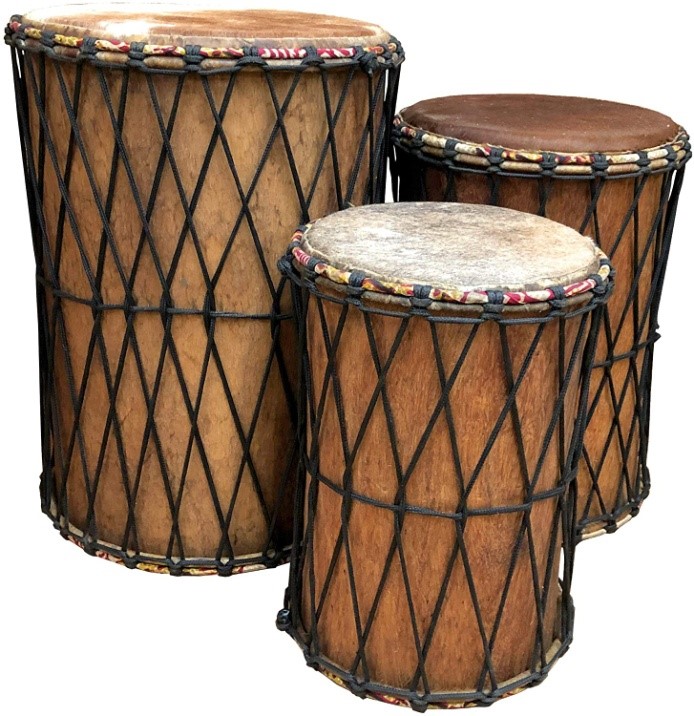
3-Cup-shaped percussion instruments or goblet drums:
In the taxonomy of percussion instruments, a very common type of percussion instruments are those that have a cup-shaped body and a skin is stretched over the larger mouth of it. The Iranian tombak is one of the cup-shaped sound skins. In West Africa, the djembe is one of the oldest cup-shaped drums in the world and also the darbuka in Arab countries and Turkey is another member of this family. Some other instruments of this family are Zurkhaneh drum, Kasoreh, Bushehr drum and so on.
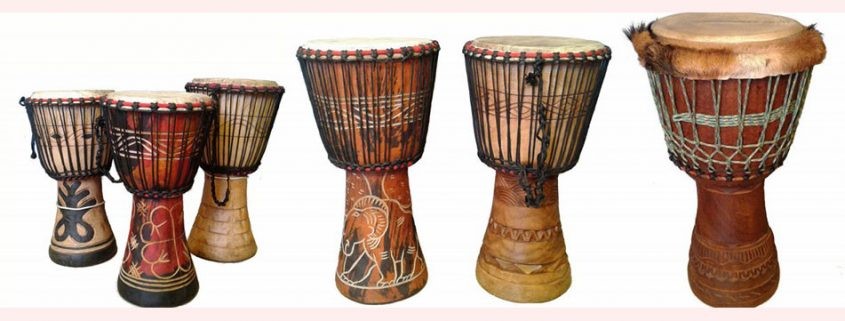
4-Bowl-shaped or twin percussion instruments:
Kettle drums or bowl-shaped percussion instruments are usually in pairs, one with a smaller mouth and a low sound and the other with a larger mouth and a bass sound. In ancient civilizations, they usually attributed gender to these instruments. For example, bangu is a double-headed drum in South America that has a small mouth called “macho” and is male, and a larger mouth called “hembra” and is female.
Also, tabla is a famous drum of Indian origin that has a small mouth called katin and is a symbol of man, and a large mouth called bass, which is a symbol of woman. In Iran, we have different types of double drums, some of which are: Doserkutan (Mazandaran drum), Gilan drum, Qusha Naghara (Azerbaijan drum), Tas (Kurdistan), Qashqai drum and so on.
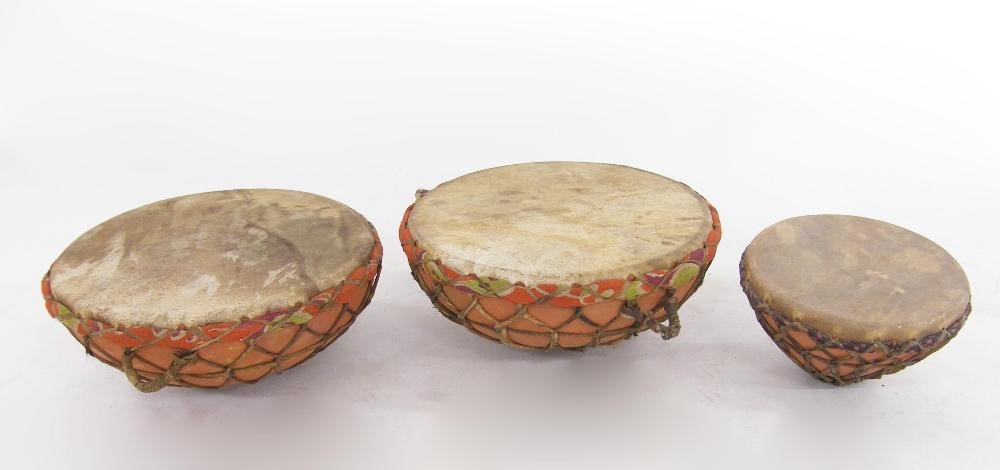
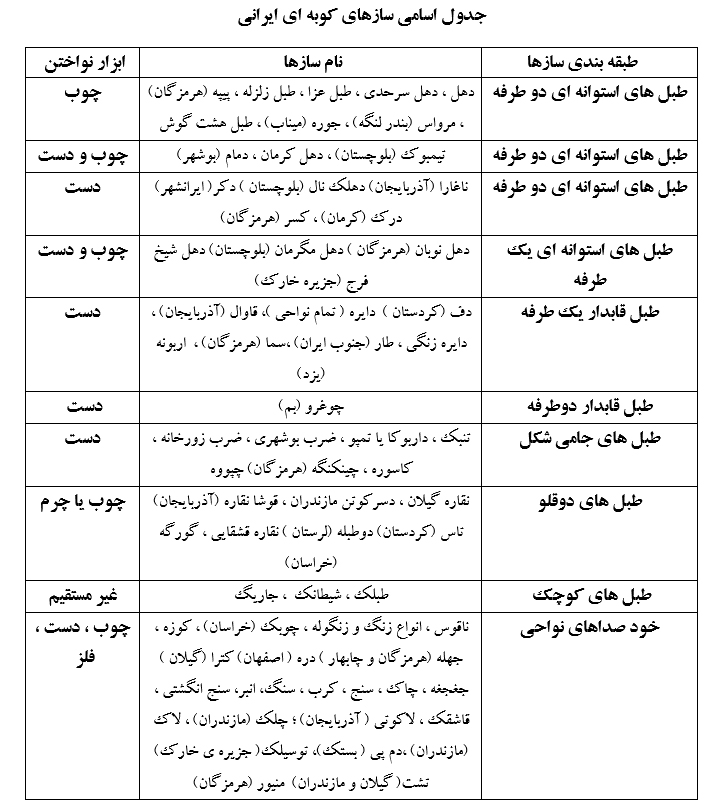
References :
1- Jeff Strong, Percussion Instruments from A to Z, translated by Mehdi Al-Mohammad, Soroud Publications
2- Mohammadreza Darvishi, Encyclopedia of Iranian Percussion Instruments, Mahoor Publications
3- Parviz Mansouri, Instrumentology, Zavar Publications
4- The Oxford Companion to Music, 10th edition, p.775, ISBN 0-19-866212-2
